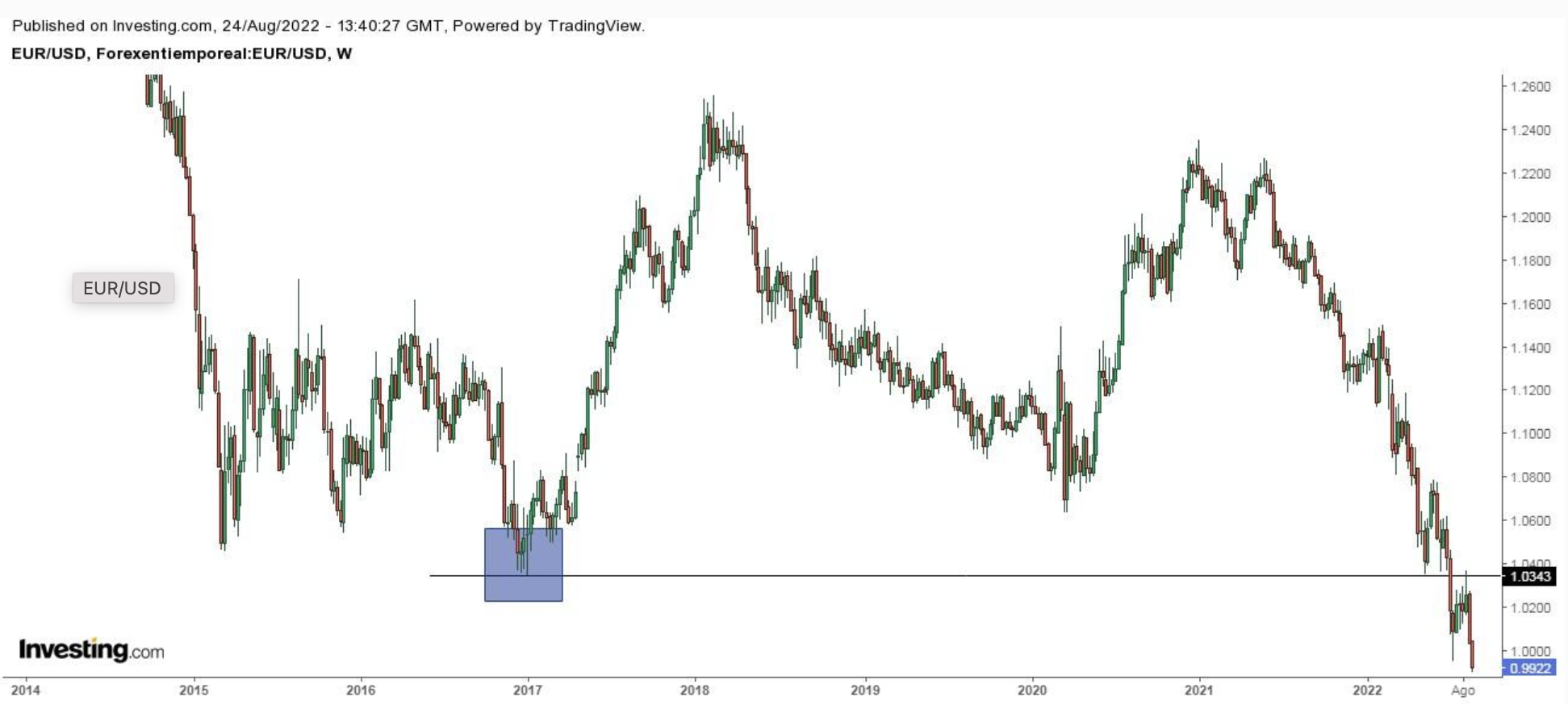- The EUR/USD has broken below key support level formed in 2016
- Macroeconomic conditions remain bearish for the European currency
- On the technical charts, things don't seem much better
One of the greatest financial stories of the fiscal year is the massive rise of the U.S. dollar against other major currencies, particularly the euro. Indeed, the YTD performance of the EUR/USD is -12.3%, making the European currency one of the year's laggards.
There are four compelling reasons to understand why this is happening:
1: Macroeconomic Risks
The possibility of a global recession drives the demand for safe-haven assets, and traditionally the greenback is one of them.
From a technical point of view, the U.S. economy has already entered a recession due to posting two straight quarters of negative GDP growth.
However, officially, the U.S. only considers an economic period recessionary once the NBER (the National Bureau of Economic Research) decreets it. The reason for that is that the organization assesses many indicators of economic activity beyond GDP growth, such as employment, personal income, real personal consumption, industrial production, and manufacturing PMI—as well as the 'Ds' of the economic decline (depth, diffusion, and duration).
Currently, most of those indicators remain positive, while manufacturing is the weakest point. So, according to the NBER, we are not in a recession yet
2: European Recession
Continuing with the theme of recessions, the European Union will soon enter one. Russia's war with Ukraine affects the Eurozone more because of its geographical proximity and the whole issue of Russian gas and raw material exports to the region.
Eurozone activity has hit a year-and-a-half low, and the poor economic outlook appears to be deepening.
3: Interest Rates
The policy divergence between the Federal Reserve and the European Central Bank pushes carry traders toward the greenback. The Fed is raising interest rates faster and more intensely than the ECB, and we know that interest rate hikes favor a country's currency.
Keep in mind that the Fed could raise rates by 50 and not 75 points at the September meeting if the next employment and inflation data come out favorable.
It is also true that the ECB could raise interest rates by 50 basis points on September 8. But even if this divergence between the two central banks narrows, it will not change the overall tone of the currency pair. Even a sharp rate hike would probably not boost the euro significantly.
4: Short Positioning
Hedge funds have increased their short positions on the euro to a three-week high.

On the technical chart, the latest bearish signal was at the loss of a key support level formed in 2016 around the 1.034 level. The first test of the support came this May when the currency pair bounced upwards from there. However, when it tested the level again in July, the pair could no longer hold and lost it. In addition, it formed a pullback with a reasonable margin.
And how far could it continue to fall in the coming months? Well, it could fall to 0.97 as the first target is not far-fetched. And the second target would be 0.96.
The advantages of having a depreciating currency (such as making exports more competitive) are overshadowed by the energy crisis and the threat of recession.
How Can We Take Advantage Of A Strong Dollar?
European companies with larger exposure to the U.S. are outperforming this year, as a weaker euro improves the ratio between costs and revenues. In fact, more than 50% of STOXX 600's revenues come from outside Europe, with the U.S. being one of the leading markets.
For example, Airbus Group (EPA:AIR) sells aircraft in dollars and books revenues in euros. As it turns out, a 1 cent movement in the euro/dollar exchange rate had a €130 million impact on annual profits.
With that in mind, we have compiled a list of European companies with the greatest exposure to the United States, along with companies that generally do well when the currency gap widens. They may be a good investment for those looking to take advantage of the current macroeconomic situation.
- Grifols (NASDAQ:GRFS)
- Galapagos (NASDAQ:GLPG)
- Sanofi (NASDAQ:SNY)
- BP (NYSE:BP)
- Wolters Kluwer (OTC:WTKWY)
- National Grid (NYSE:NGG)
- Qiagen (NYSE:QGEN)
- Merck & Company (NYSE:MRK)
- GlaxoSmithKline (NYSE:GSK)
- Shell (NYSE:SHEL)
- Ahold (OTC:ADRNY)
- BAE Systems (OTC:BAESY)
- Roche Holding (SIX:ROG)
Disclosure: The author currently does not own any of the securities mentioned in this article.
